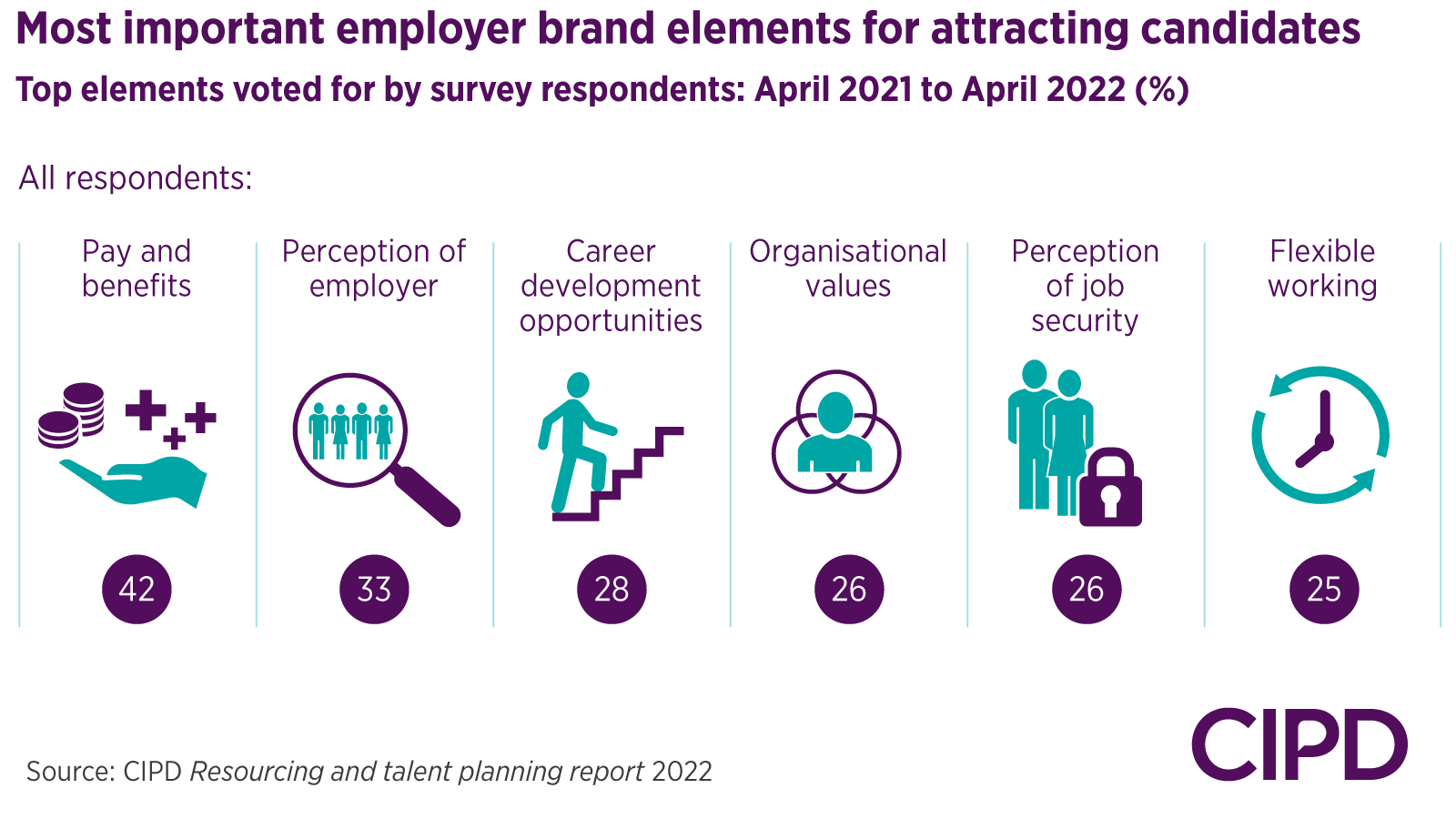Claire McCartney, Senior Policy Adviser - Resourcing and Inclusion, CIPD explores how organisations can harness their employer brand to improve recruitment and retention.
Amid a worsening economic outlook, organisations are still grappling with acute skills shortages and require a strong employer brand to help them recruit and retain valued employees. The latest Resourcing and Talent Planning report – produced by the CIPD and Omni RMS – provides insights into what organisations should be doing to enhance their employer brands.
In this blog post, we look at what the report reveals about current challenges in the labour market and provide recommendations on how organisations can harness their employer brand to improve recruitment and retention.
Ongoing challenges with attraction and retention
In the report, 70% of survey respondents said that competition for well-qualified talent increased between April 2021 and April 2022. While 60% said that talent was more difficult to retain. Overall, 77% experienced difficulties attracting candidates, with most citing senior or skilled roles as the most difficult to recruit.
Understanding what employees want is key
Looking at what your employees want is critical to any Employee Value Proposition and brand messaging when hiring. So, start with your people and find out what is most valuable to them. We know that employees value different benefits at different stages of their lives, so be flexible in your offering.
Our Good Work Index provides a looking glass into what UK workers value in a job and can be drawn on to determine how you can enhance your employer brand. The benchmarking report measures job quality across various dimensions and its annual snapshot gives a definitive view of what good work looks like. It suggests that employees should not only be fairly rewarded, but also have a good work-life balance and be given opportunities to develop. It also highlights the importance of fostering a healthy, supportive work environment that give employees a voice to shape their working lives.
How employer brand is evolving
Three-quarters of organisations have taken action to improve their employer brand over the last year, with larger organisations most likely to have done so.
Pay and benefits have risen from second to first place in employers’ rankings of which elements of employer brand are most important when it comes to attracting candidates. This replaces organisational values, which has fallen from first to fourth place. However, there is considerable variation between organisations and sectors.
Pay and benefits stand out as a key attractor in the private sector, but in the public sector, slightly more respondents believe the perception of the organisation as an employer is important, and nearly as many include job security among the most important elements of their employee brand.
Non-profit organisations are more likely to rank their goals, strategy, and values as most important in attracting candidates. Because they are less able to compete on pay, organisations in this sector are more likely to appeal to candidates through flexible working and working from home/hybrid options.

Key recommendations for harnessing your employer brand
- Review what’s possible when it comes to pay, but also take into consideration any changes that might be helpful to your overall benefits package. Think about pay transparency and flexible working when advertising roles and be realistic about what you position as a benefit.
- Advertise salaries in job adverts and give information about pension schemes and other core benefits. Don’t ask about previous salaries during the recruitment process. Following this approach will help you support fairness and reduce the risk of pay gaps in your workforce.
- Now is a good time to critically assess your employee value proposition. Employees value different benefits at different life stages, so be flexible in your offering and allow for personalisation – let people choose what is most important to them.
- While pay is important, people also want to work for organisations that stand for something positive. Take steps to make your organisation a purposeful, inclusive, flexible place to work that supports staff wellbeing. Career development opportunities are also important, as is job security, so ensure your organisation offers these, too.
- Finally, don’t forget to measure the impact of your employer brand, otherwise, you won’t know if it’s working. In our report, just 12% of organisations said they’d taken steps to measure the impact of their employer brand and fewer said they’d monitored or actioned feedback received through other websites and social media.
